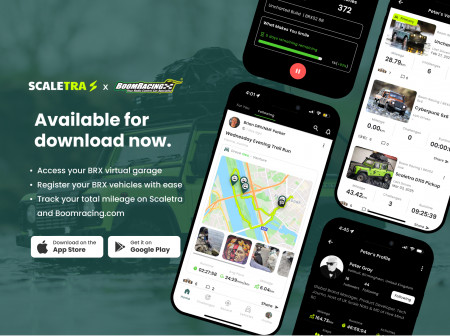
How Does RC Car Race Work?
Some people like to get competitive, and some just like to play RC cars as a hobby after work. Some wants to be faster than other people, some like to go slow. Depending on your style, there’s always room for improvement. One easy way is to compete with the others.
The Score
There’s a standard for RC car races, the goal is to see how yourself is performing compare with the others and to see which "main" you are in. The IFMAR (International Federation of Model Auto Racing) has established uniform international rules and regulations for the races and competitions for all classes of radio controlled cars. So, how do you win? The score is based on a combination of laps and time. A typical race would count the time you used to finish a lap within a set amount of time. An example of results would look like the following:
14/5:03 – (14 laps, in 5 minutes and 5 seconds) – you can say "14 in 05 "for short.
14/5:13 – (14 laps, in 5 minutes and 13 seconds, slower than the first place)
13/5:01 – (13laps, in 5 minutes and 3 seconds, slower than 14 laps)
The Run down - Practice
After you signed up for a race, make sure you arrive there early enough to practice and be prepared, be aware of the functionality of the car. The track is usually open for practice and testing. You will have to register for your class and include your transponder number that use to count laps.
Sometimes, you would not be able to practice. The track can either be open for practice or closed Open meaning the track can be used by anyone who wants to run their car. On the other hand, closed can be limited to classes, scales, or sometimes even classified by the type of fuel (Electric / Nitro). That would allow different cars to run without worrying being hit by other cars. In the past, club races are mostly open up for people to practice, and it varies for bigger races.
The Run down - Qualifying
After the race directors are done putting together the information and ready to start, the qualifying process will start. The race directors will first post the heat listings, which are listed with all the heats, the class, and who will race in where. Most of the time, the order on the list will also be the starting order.
There are a few qualifiers, to sort out the qualification of the racers. Usually there are 2-3 qualifiers, and in some bigger races, there are more of them. In most cases, there are IMFAR qualifier and Heads Up qualifiers.
For IFMAR qualifier, your own timer starts when your car passes the line in the first lap. This means that every racer has their own timer, and ironically it encourages people not to compete with each other directly. It is important to note that we should let the faster car pass by, just like in a race. In general, while qualifying, you should always let the faster cars to get pass by. This would allow a fair race and let them to get the best qualifier they can. On the other hand, it would cost you more time when you are trying to block them, and incident happens. The Buzzer goes off and signifies racers that you may cross the line after the buzz, and still have time left on your own clock. After the First round of qualifier, some races will re-sort the field, and put the fastest guy in one heat, and sort the rest accordingly until every racer has a group. This would make you run with people who have similar lap times with you. Some systems accumulate points you gain over the qualifiers, so the results might vary due to different rating scheme.
The Run down – Race
When the qualifying rounds are done, each racer will have a qualifying order. The Top Qualifier, aka the TQ, is the person with the most points or with the most laps in the designated time. For example, when there are 100 people in a main, the top 10 people would be in the A main. Then a grid starts in their qualifying order. The next 10 people would be in the B main, and then the next would be in the C main and so on. The fastest person in the B main is also a TQ in B main or aka BQ (B Qualifier).
Some race allows what people called "bumps", where the top qualifier in every main can be "bumped" into the next main up. Mains run in a Heads Up style where everyone grid and goes when the buzz signals. This is the real racing where you are competing with everyone else in the track. As we have mentioned before, directors will ask you to let the first place driver goes by if they are lapping you. However, you should be running as fast as you can.
Some people would always let others to get passed by, but they would still hold the position if they want to fight for it. It really depends on you whether you let someone from behind to get pass you because they are faster or simply they were in the first place. When the race ends, you will hear a buzz again; you should still go full speed until you are done with the lap. Sometimes, the race will run 3 times, and you have a score every lap and they will accumulate.
I believe every RC driver should give it a try at least once, sign up for it. You will get excited about it and meet a lot more different people. My experience is that you should always check on your competitors, even be friends with them, and that is how you get better and better.

















